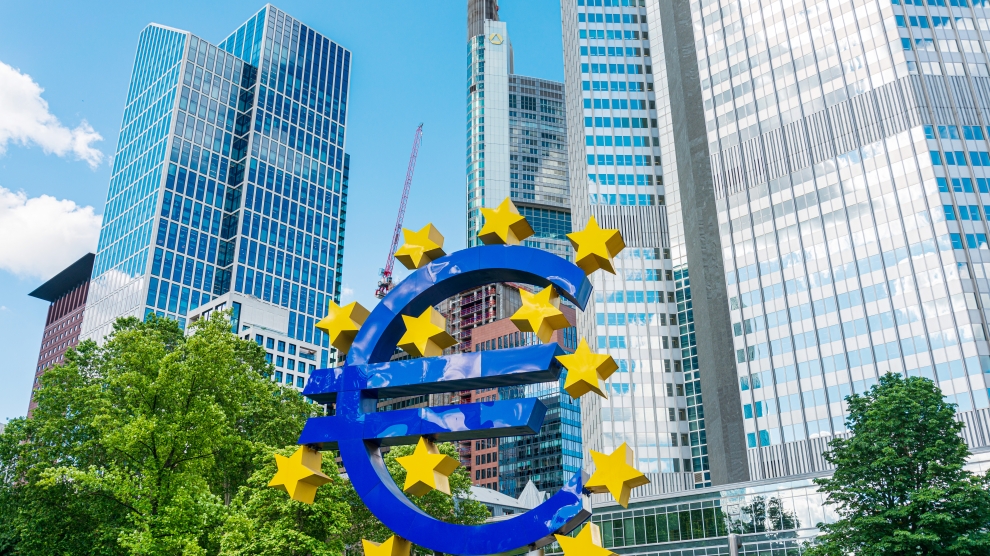On July 10, Croatia and Bulgaria got the green light from European Union finance ministers to join the European Central Bank’s Exchange Rate Mechanism II (known as ERM II and sometimes called the eurozone waiting room), a key step on the road to adoption of the euro.
Both member states must now participate in the mechanism without severe tensions and, in particular, without devaluing their currency central rate against the euro on their own initiative, for at least two years before they can qualify to adopt the euro.
However, while – if all goes well – the two countries could in theory adopt the euro within three years, the reality is that neither is likely to meet all the convergence criteria anytime soon. Nevertheless, their membership of ERM II does send a clear message to other states that the euro remains an viable option and that is not a closed shop.
Coming soon after North Macedonia and Albania were finally told that they could begin European Union accession talks, it also underlines the EU’s ongoing commitment to the countries of the Western Balkans.
During the ERM II phase of eurozone membership, the exchange rates of the Bulgarian lev and the Croatian kuna will be set to a base of 1.95583 per euro for the lev, and 7.5345 per euro for the kuna. The exchange rates are allowed to fluctuate by 15 per cent, but no more.
ERM-II was introduced in 1999, together with the single currency, and it is a compulsory step for the countries wanting to join the eurozone, designed to build resilience into economies and help both of them focus on stability.
Both countries have already had to undertake serious policy commitments in order to allowed to join ERM II. Monitored by the European Commission, Bulgaria has made commitments in the areas of supervision of the non-banking financial sector, insolvency, and anti-money laundering frameworks, and the governance of state owned-enterprises. In Croatia, the main commitments were anti-money laundering, production of statistics, public sector governance, and the financial and administrative burden on enterprises.
Additionally, in order to adopt the euro member states need to achieve a high level of sustainable economic convergence which is examined in reference to price stability, sound public finances, long-term interest rates and exchange rate stability.
“This rather demanding process was started, which is what led European institutions to agree to membership,” the Croatian Chamber of Commerce told Emerging Europe. “However, ambition alone was not enough. The convergence criteria had to be met, the official acceptance of the Croatian letter of intent to join ERM II – along with the accompanying action plan with reform measures – had to be obtained, and then that plan had to be implemented.”
Both countries hope that when they do finally join the eurozone, they should be able to attract more foreign investment, and borrow at more preferential rates.
“The euro is a tangible symbol of European unity, prosperity and solidarity. ERM II membership recognises the important economic reforms already undertaken by Bulgaria and Croatia while confirming the continued attractiveness of Europe’s single currency,” said President of the European Commission Ursula von der Leyen.
Bulgarian Prime Minister Boyko Borissov has called the joining of the ERM II a “great success.”
“I am confident that we are on the right path,” he added.
The Croatian Chamber of Commerce believes that joining the ERM II is a great success for Croatia and that eventually replacing the national currency with the euro will have many advantages, especially for entrepreneurs.
“It will be done primarily by eliminating the foreign currency risk and currency exchange fees, the potential credit rating growth, lower financing costs and the advantages of financial assistance to the euro area members, such as the one provided in the current crisis caused by the coronavirus.”
ING, a bank, believes that ERM II entry will definitely put rating upgrades back on the agenda.
All rating agencies consider the euro adoption process as a positive (as an anchor for reforms and fiscal prudence) and euro adoption itself (notably due to the euro’s reserve currency status and with all euro-denominated debt becoming local currency debt).
Indeed, both countries have seen upgrades in recent years thanks to healthy external balance sheets, supportive fiscal policies and structural reforms, with Croatia (Ba2 positive/BBB- stable/BBB- stable) reaching investment-grade status last year. Meanwhile, Bulgaria (Baa2 positive/BBB stable/BBB stable) had hopes of being given three positive outlooks earlier this year, but the Covid-19 outbreak dashed these.
“We believe Bulgaria and Croatia joining ERM II does not mean a guarantee that the euro adoption process is now on autopilot as both countries still face important challenges,” says the bank. “These might tend to be tilted towards the qualitative side for Bulgaria (institutional framework, rule of law) and quantitative side for Croatia (public finances sustainability), but the reality is that none of the two will meet all the convergence criteria anytime soon.”
In a time of crisis and uncertainty, ERM II membership for Croatia and Bulgaria sends a message of confidence in the euro and clarity that the two countries will be the next to join.
“As they take this key step towards our common currency, we as Europeans take a new step towards ever closer Union,” says Paolo Gentiloni, European Commissioner for the Economy.
—
Unlike many news and information platforms, Emerging Europe is free to read, and always will be. There is no paywall here. We are independent, not affiliated with nor representing any political party or business organisation. We want the very best for emerging Europe, nothing more, nothing less. Your support will help us continue to spread the word about this amazing region.
You can contribute here. Thank you.





[…] lines were announced. In the summer of 2020, the entry of Croatia and Bulgaria into the ERM II was fast-tracked and now both countries are one step closer to Euro Area membership. By contrast, Romania’s ERM II […]
[…] In a time of crisis and uncertainty, ERM II membership for Croatia and Bulgaria sends a message of c… […]